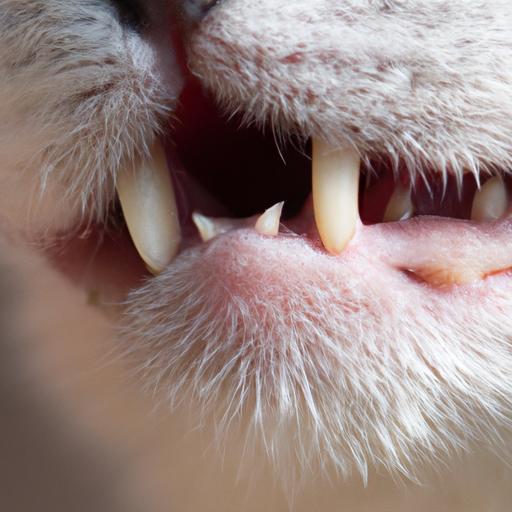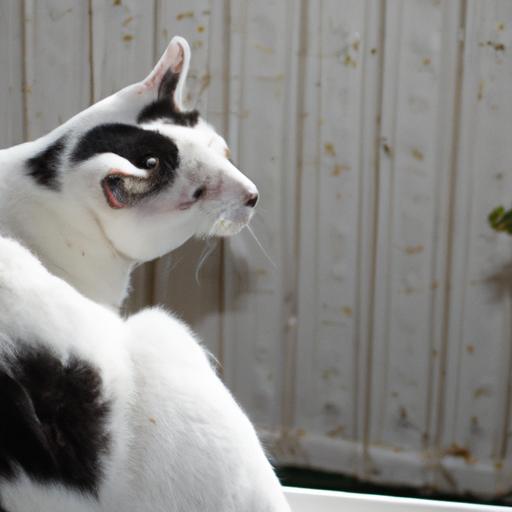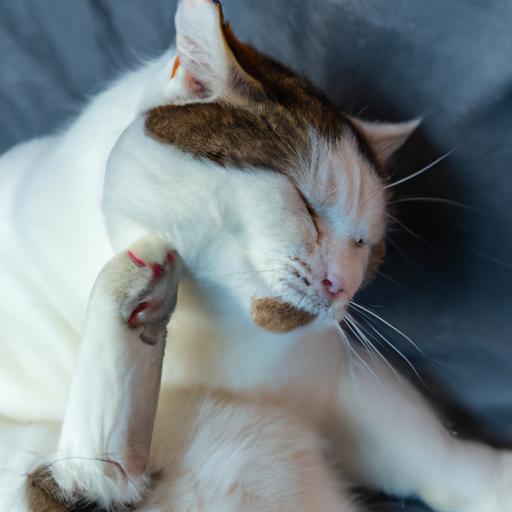Are you a proud cat owner who wants to ensure the best possible health for your feline companion? Just like humans, dental health plays a vital role in a cat’s overall well-being. Unfortunately, dental issues are not uncommon in our whiskered friends. From plaque buildup to tooth decay, cats can suffer from various dental problems that require attention. In this article, we’ll focus on an intriguing topic – cat tooth loss without root. Let’s delve into the world of cat dentistry and explore the importance of this issue.
A. The Importance of Dental Health in Cats
Imagine if we neglected our own oral health – toothaches, gum diseases, and even tooth loss would become a part of our everyday lives. Similarly, cats also rely on their teeth for essential functions like eating, grooming, and defending themselves. Ignoring their dental health can lead to severe consequences, impacting their quality of life. Regular dental care, including professional examinations and at-home practices, can prevent dental diseases and maintain your cat’s overall health.
B. Common Dental Issues in Cats
Cat owners may encounter various dental problems, ranging from mild to severe. Plaque buildup, tartar accumulation, gingivitis, and periodontal disease are some of the common issues faced by our feline friends. If left untreated, these conditions can lead to pain, bad breath, difficulty eating, and even systemic infections. It’s crucial to be proactive in identifying and addressing dental problems promptly.
C. Focus on Cat Tooth Loss without Root
Among the dental issues cats can experience, tooth loss without root is a particular concern. This refers to the loss of a tooth, where the entire structure, including the root, is missing. Understanding the causes, symptoms, and potential treatment options for this condition is essential to ensure your cat’s well-being. In the following sections, we will delve deeper into the reasons behind cat tooth loss without root and explore how it can be prevented and managed effectively.
Stay tuned for the upcoming sections, where we will unveil the possible reasons behind cat tooth loss without root and the signs to watch out for. We’ll also discuss preventive measures and treatment options that can help your furry friend maintain a healthy and happy smile. Remember, your cat’s dental health is a crucial aspect of their overall wellness, and by taking action, you can ensure their vibrant and pain-free life.
Understanding Cat Tooth Loss
Cats are known for their independent and self-sufficient nature, but when it comes to dental health, they rely on us for proper care and attention. In this section, we will explore the ins and outs of cat tooth loss, shedding light on the causes, types, and impact it can have on a cat’s overall health.
A. Causes of Tooth Loss in Cats
Tooth loss in cats can occur due to various reasons, and it’s crucial to identify the underlying cause to address the issue effectively. Some common causes include:
-
Dental Diseases and Infections: Periodontal disease, tooth decay, and oral infections can lead to tooth loss in cats. Plaque and tartar buildup can gradually erode the tooth structure, causing it to become loose and eventually fall out.
-
Trauma or Injury to the Tooth: Accidents or injuries that impact the mouth can result in tooth loss. Cats may experience tooth fractures, dislodgment, or even complete avulsion if subjected to significant trauma.
-
Genetic Predisposition to Tooth Problems: Certain breeds of cats may have a higher susceptibility to dental issues, including tooth loss. Genetic factors can contribute to weaker tooth structures or an increased likelihood of developing dental diseases.
B. Different Types of Tooth Loss (with and without Root)
When it comes to tooth loss in cats, there are two primary categories: with root and without root.
-
Tooth Loss with Root: This type of tooth loss occurs when the entire tooth, including the root, is lost. It can be a result of severe dental diseases, trauma, or advanced periodontal conditions. Professional veterinary intervention is necessary to address the underlying cause and prevent further complications.
-
Tooth Loss without Root: In this case, the tooth falls out, leaving no remnants of the root. It is important to differentiate between tooth loss with and without root, as the causes and treatment approaches may vary. Tooth loss without root can be a consequence of trauma, underlying infections, or even genetic factors.
C. Impact of Tooth Loss on a Cat’s Health
Tooth loss can significantly impact a cat’s overall health and well-being. Beyond the obvious difficulties in chewing and eating, tooth loss can lead to several complications, including:
-
Nutritional Deficiencies: Inability to chew properly can result in nutritional deficiencies as cats struggle to consume their regular diet. This can lead to weight loss, reduced energy levels, and a weakened immune system.
-
Oral Pain and Discomfort: Tooth loss can cause chronic oral pain and discomfort for cats. This can affect their behavior, causing irritability, decreased appetite, and reluctance to play or groom.
-
Increased Risk of Dental Diseases: Missing teeth can create spaces and gaps in the mouth, promoting the accumulation of plaque and bacteria. This increases the risk of further dental diseases, exacerbating the existing problem.
Understanding the causes, types, and impact of tooth loss in cats is crucial for providing appropriate care and intervention. In the following sections, we will discuss the symptoms and signs to look out for in case of tooth loss without root. Stay tuned to ensure your furry friend’s dental health is in optimal condition.
Possible Reasons for Cat Tooth Loss without Root
When it comes to cat tooth loss without root, several factors can contribute to this concerning issue. Understanding the possible reasons behind it is crucial for effective prevention and treatment. Let’s explore some common causes:
A. Dental Diseases and Infections
Dental diseases and infections can wreak havoc on a cat’s oral health, leading to tooth loss without root. Periodontal disease, for instance, is a common culprit. It occurs when plaque and tartar build up on the teeth, causing inflammation and infection of the gums. If left untreated, this condition can progress, resulting in the loss of teeth. Additionally, other dental infections and conditions like tooth decay, abscesses, and stomatitis can also contribute to tooth loss.
B. Trauma or Injury to the Tooth
Cats, being curious and agile creatures, may occasionally experience accidents or injuries that affect their teeth. Trauma or injury to the tooth, such as a hard blow or a fall, can cause the tooth to become loose or even dislodged entirely. Cats engaging in rough play or experiencing accidents, especially involving their mouths or faces, are at a higher risk of tooth loss without root.
C. Genetic Predisposition to Tooth Problems
Just like humans, cats can inherit certain genetic traits that make them more susceptible to dental issues. Some breeds may have a higher predisposition to tooth problems, including tooth loss without root. These genetic factors can affect the structure and strength of the teeth, making them more prone to damage or premature loss.
By understanding these potential reasons for cat tooth loss without root, you can take proactive steps to prevent such issues. Regular dental check-ups, maintaining good oral hygiene, and ensuring a safe environment for your feline friend can significantly reduce the risk of tooth loss. In the next section, we will delve into the symptoms and signs that may indicate tooth loss without root, allowing for early detection and timely intervention.
Symptoms and Signs of Cat Tooth Loss without Root
As responsible cat owners, it’s important to be vigilant about our feline companion’s dental health. When it comes to tooth loss without root, there are several symptoms and signs to watch out for. By recognizing these indicators, you can take appropriate action and seek timely veterinary care. Let’s explore the visible signs, behavioral changes, and oral health-related issues that may accompany cat tooth loss without root.
A. Visible Signs of Missing Teeth
One of the most apparent signs of tooth loss without root is the absence of teeth. You may notice that a tooth or multiple teeth are no longer present in your cat’s mouth. Take a closer look at their gums and check for any gaps or spaces where the missing teeth used to be. However, keep in mind that cats are experts at hiding pain, so it’s possible that they may not exhibit obvious discomfort despite the missing teeth.
B. Behavioral Changes and Discomfort
Cat tooth loss without root can cause behavioral changes in our feline friends. If your cat is experiencing discomfort or pain due to tooth loss, they may exhibit behaviors such as decreased appetite, reluctance to eat hard food, drooling, pawing at their mouth, or even aggression when their mouth is touched. Pay attention to any changes in your cat’s eating habits or behavior, as they may be trying to communicate their discomfort to you.
C. Oral Health-related Issues
Tooth loss without root can lead to various oral health-related problems. When a tooth is missing, it creates a gap in the mouth that can potentially trap food particles, leading to gum inflammation and infections. Gingivitis, periodontal disease, and oral infections may develop as a result, further exacerbating your cat’s discomfort and potentially affecting their overall health. Regular dental check-ups are crucial to identify and address these issues promptly.
By closely observing your cat’s mouth and behavior, you can identify the symptoms and signs of tooth loss without root. If you notice any visible changes, behavioral issues, or oral health-related problems, it’s essential to consult your veterinarian for a thorough examination and appropriate treatment. Don’t underestimate the importance of dental health in cats, as addressing tooth loss without root can improve your cat’s overall well-being and ensure a pain-free life.
Prevention and Treatment Options
Keeping your cat’s dental health in check is vital to prevent tooth loss without root and other dental issues. By adopting a proactive approach and implementing effective preventive measures, you can ensure your feline friend maintains a healthy and strong set of teeth. Additionally, understanding the various treatment options available can help address any existing dental problems. Let’s explore some essential prevention and treatment strategies:
A. Regular Dental Care and Hygiene Practices
Just like humans, cats benefit greatly from regular dental care and hygiene practices. Incorporating these habits into your cat’s routine can significantly reduce the risk of tooth loss without root. Here are some key practices to consider:
-
Brushing: Yes, you read it right! Brushing your cat’s teeth is an effective way to remove plaque and prevent dental issues. Use a specially designed cat toothbrush and toothpaste to gently brush their teeth. Start slowly, allowing your cat to get accustomed to the process, and gradually increase the duration.
-
Dental Diet: Providing your cat with a diet specifically formulated to promote dental health can be beneficial. Look for dental care cat food that helps reduce tartar buildup and maintain oral hygiene. Consult your veterinarian to choose the most suitable option for your furry friend.
-
Dental Treats and Toys: Treats and toys designed to promote dental health can aid in removing plaque and keeping your cat’s teeth strong. These products often have a textured surface that helps in cleaning teeth while your cat enjoys a tasty snack or engages in playful activities.
B. Professional Veterinary Dental Examinations
Regular visits to your veterinarian for dental examinations are crucial for early detection and prevention of dental issues in cats. Veterinarians have the expertise and tools to thoroughly examine your cat’s oral health, identify any potential problems, and provide appropriate treatment recommendations. These examinations may include dental cleanings, X-rays, and assessments of the gums and teeth.
C. Treatment Options for Tooth Loss without Root
If your cat has already experienced tooth loss without root, there are treatment options available to address the issue and maintain their oral health. Some potential treatments include:
-
Dental Prosthetics: Specifically designed dental prosthetics, such as bridges or dental implants, can replace missing teeth and restore functionality. These options require professional expertise and should be discussed with your veterinarian to determine the most suitable choice for your cat.
-
Oral Health Management: Your veterinarian may recommend specific oral health management strategies, such as antibiotics or antiseptic solutions, to address any underlying infections or prevent further complications.
Remember, prevention is always better than cure. By implementing regular dental care, seeking professional veterinary examinations, and exploring appropriate treatment options, you can ensure your cat’s dental health remains in optimal condition. Your veterinarian will guide you through the best practices and recommend tailored solutions based on your cat’s specific needs.
Stay tuned as we conclude this article by emphasizing the significance of early detection and intervention, and providing additional tips to promote your cat’s dental health.
Conclusion: Promoting Dental Health in Cats
Ensuring optimal dental health for your beloved feline companion is not just a matter of aesthetics but a crucial aspect of their overall well-being. Through this article, we have explored the importance of dental health in cats, the common dental issues they may face, and delved into the specific concern of cat tooth loss without root.
By being proactive in providing regular dental care, such as professional examinations and at-home practices, you can significantly reduce the risk of dental diseases in your cat. Remember, prevention is key. Early detection of dental issues, including tooth loss without root, allows for prompt intervention and minimizes the potential impact on your cat’s health.
To promote dental health in your cat, make dental care a part of their routine. Brushing their teeth regularly with cat-specific toothpaste, providing dental-friendly treats and toys, and ensuring a balanced diet are all essential steps in maintaining their oral hygiene. Additionally, scheduling regular veterinary dental check-ups will help identify any potential issues before they escalate.
If your cat experiences tooth loss without root, it is essential to seek veterinary advice promptly. Your veterinarian will be able to determine the underlying cause and recommend appropriate treatment options. These options may include extractions, dental cleanings, or other specialized procedures to address the specific dental issue.
Remember, cats are experts at hiding discomfort or pain, so it’s crucial to be observant and look out for signs of dental problems. By investing in your cat’s dental health, you are ensuring their overall wellness and longevity.
In conclusion, cat tooth loss without root is a significant concern that should not be taken lightly. By understanding the importance of dental health in cats, recognizing common dental issues, and taking proactive measures to prevent and address tooth loss, you can provide your feline friend with a healthy and happy life. Together, let’s prioritize their dental care and ensure their vibrant smiles light up our homes for years to come.



